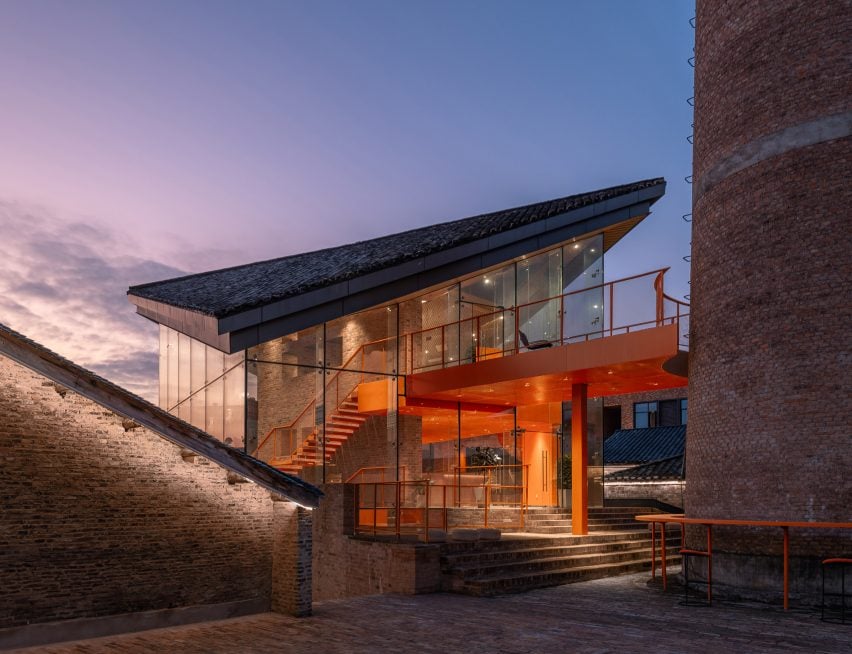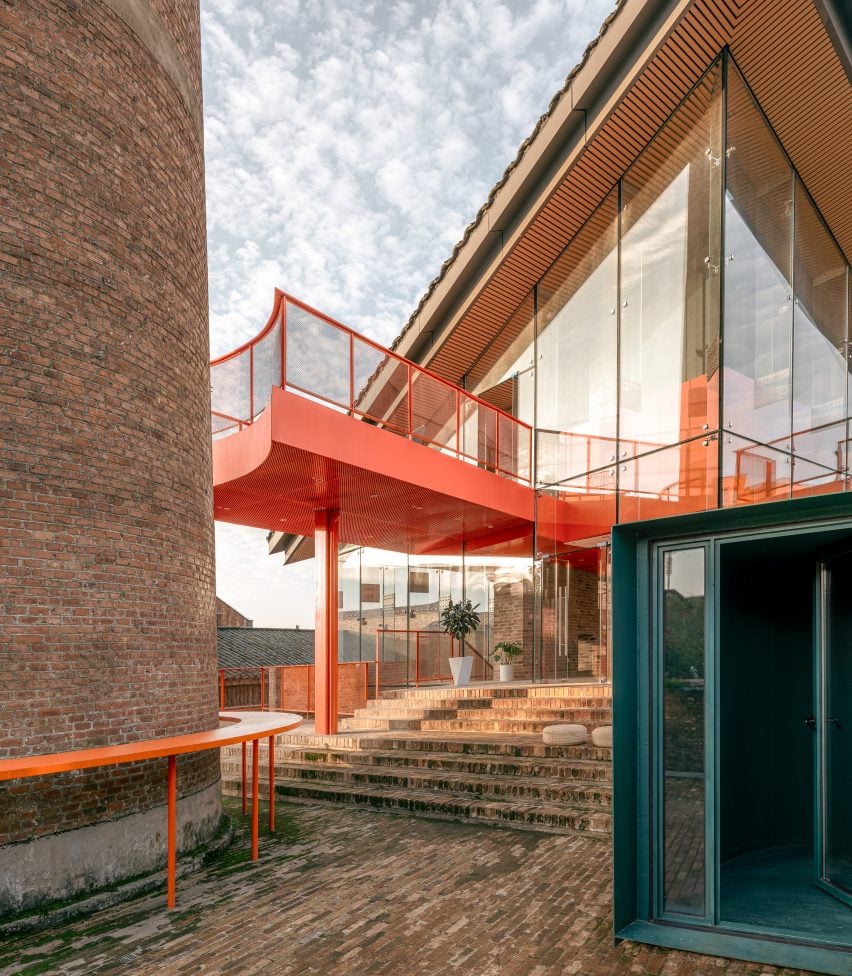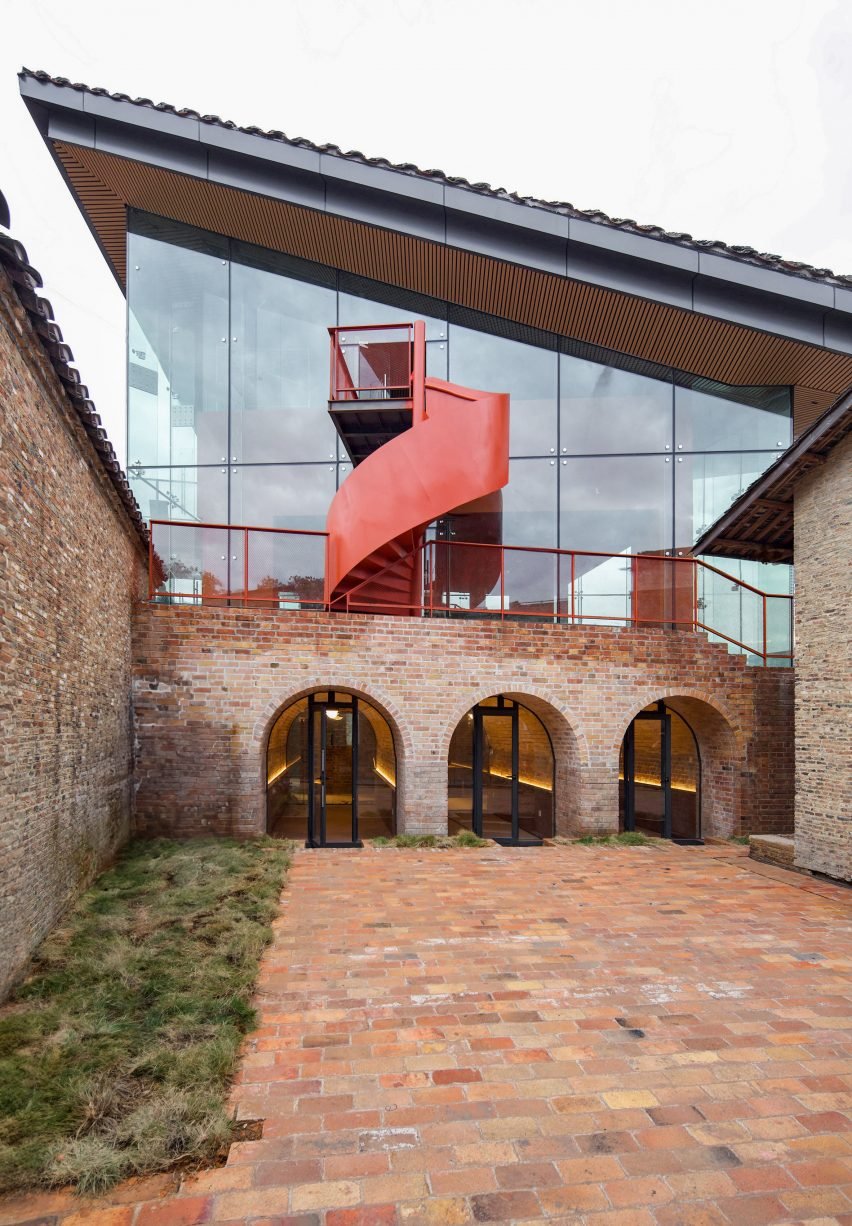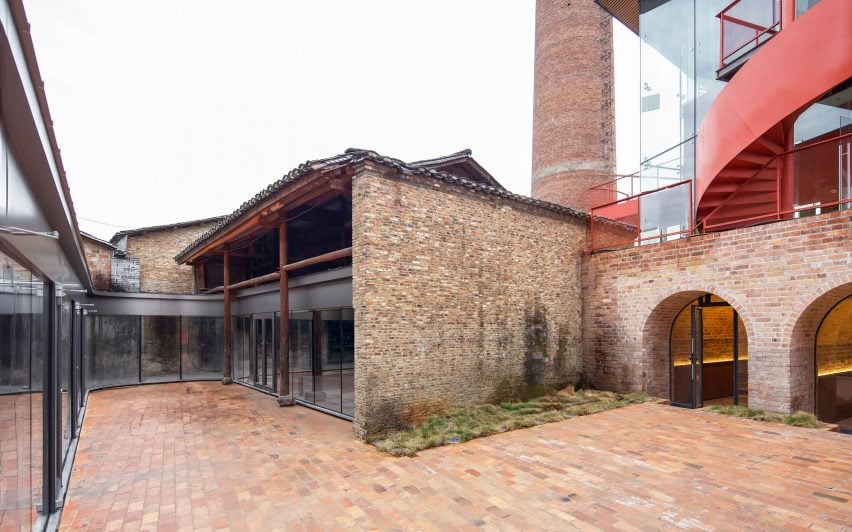Chinese studio People’s Architecture Office has converted an old porcelain factory in Jingdezhen into workshops and a gallery using colourful steel and glass extensions.
Named Porcelain Factory Plug-in Revival, the project is located alongside the Imperial Kiln Ruins and Imperial Kiln Museum in a historical part of the city dubbed the porcelain capital of the world.
Beijing-based People’s Architecture Office’s (PAO) design opens up the previously private site to expand the area’s offering for both locals and tourists.

Using a strategy that the studio calls “plug-in architecture”, the site’s traditional brick and timber structures have been extended and interlinked with contemporary elements in glass and blue and orange steel.
“By using plug-in architecture, the design addresses contemporary needs within a heritage context, adding functional spaces that support modern artistic practices and community interaction,” PAO principal James Shen told Dezeen.
“This approach enables modern interventions to coexist with traditional elements, creating a space that harmonies old and new as a form of urban regeneration,” he added.

At the centre of the site next to a large brick chimney, PAO has encased the factory’s tallest structure in a glazed shell.
This aims to better connect its internal exhibition spaces and cafe to a surrounding public square, created by uniting two previously isolated courtyards.
This central form is topped by an oversized roof described by Shen as the project’s “contemporary focal point”. It is finished with clay tiles on the exterior and faceted, slatted wood ceilings above the internal spaces.
The three-story glass building, a key intervention, anchors the public square and introduces openness and transparency, visually harmonising with the surrounding traditional architecture,” he explained.

“The balance between modern and traditional is emphasised by the roof’s ‘floating’ quality over the transparent enclosure, creating a memorable architectural feature that elegantly bridges the distinction between the past and the present,” Shen added.
Around this central structure are the restored porcelain workshops, of which the existing brick and timber structures have been restored and extended by PAO with a series of prefabricated cuboid modules, staircases and walkways.

Each metal-clad module has allowed the insertion of modern facilities into the old buildings, including a kitchen, bathrooms, meeting spaces and sleeping areas, while minimising disruption to their existing fabric.
PAO was founded in Beijing in 2010 by Shen, He Zhe, and Zang Feng. Previous projects by the studio include an amoeba-shaped public restroom in Manshan Park and the renovation of a school in Shenzhen with blue-toned metalwork.
The photography is by Zhu Yumeng.

